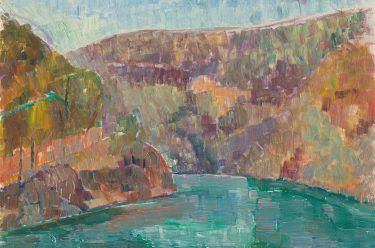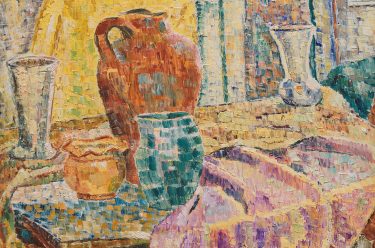Even though they did not discuss their work with each other, North American artist Georgia O’Keeffe (1887–1986) and Australians Margaret Preston (1875–1963) and Grace Cossington Smith (1892–1984) shared a passionate curiosity for the natural world, and each worked within the emerging transcultural discourse of Modernism.
Their respective early training in traditional representational techniques gave way to an enthusiasm for the new art, just as abstraction was debated across Europe in the first decades of the twentieth century. The vocabulary of colour and abstraction is common to both their artistic developments and professional successes. Equally significant is their will to express a specific sense of place, especially the familiar colours of their natural surroundings. O’Keeffe, Preston and Cossington Smith painted with conviction, creating a distinct and identifiable art separate from European Modernism, one evocative of its origin.
When Georgia O’Keeffe moved to New York in 1918, she joined a passionate group of artists (including Arthur Dove, Marsden Hartley and John Marin) known as the Stieglitz Circle, represented by photographer and avant-garde gallerist Alfred Stieglitz. He encouraged them to respond to European Modernism using their unique knowledge of the urban and industrial characteristics of the United States to make a distinctive ‘American modern art’. During the 1920s, the Stieglitz Circle concentrated their efforts on abstraction and New York skyscrapers.
Georgia O’Keeffe 1918
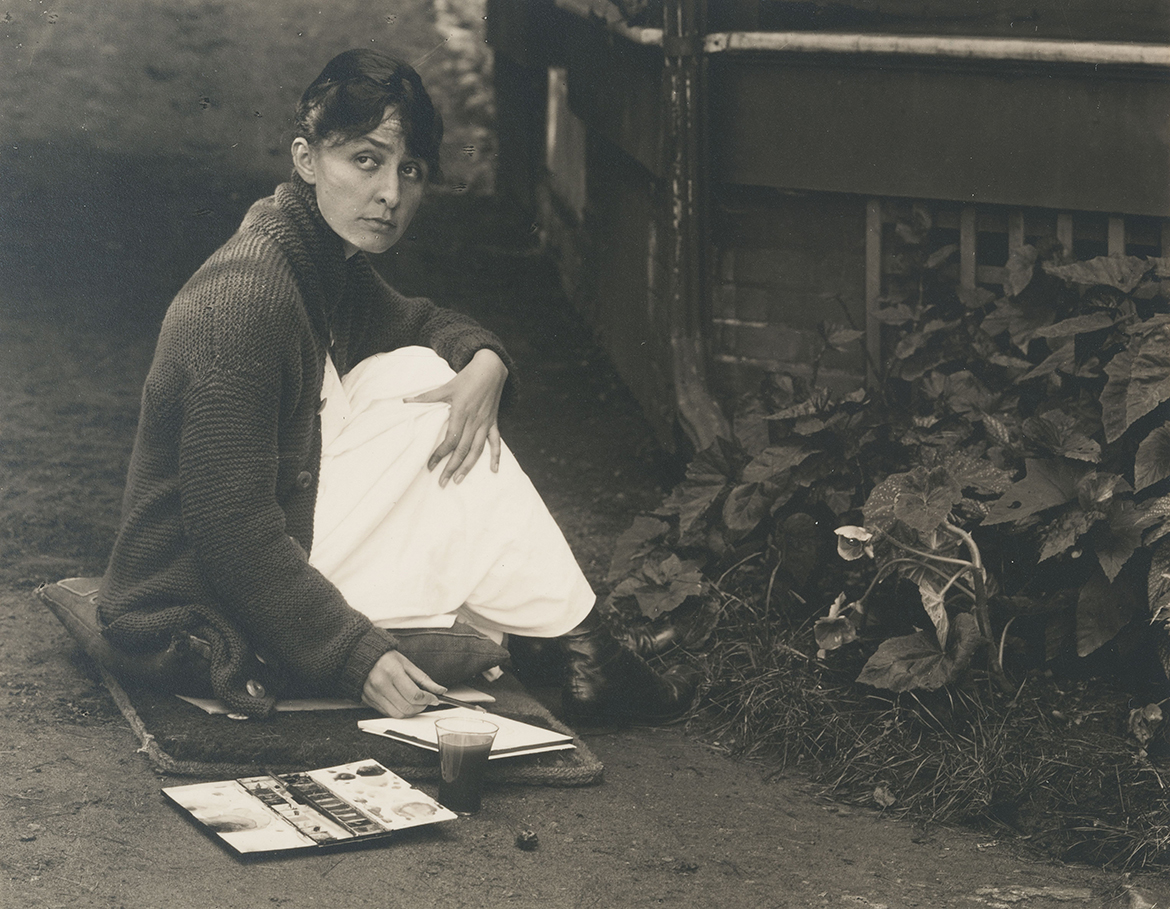
Georgia O’Keeffe ‘Storm Cloud, Lake George’ 1923
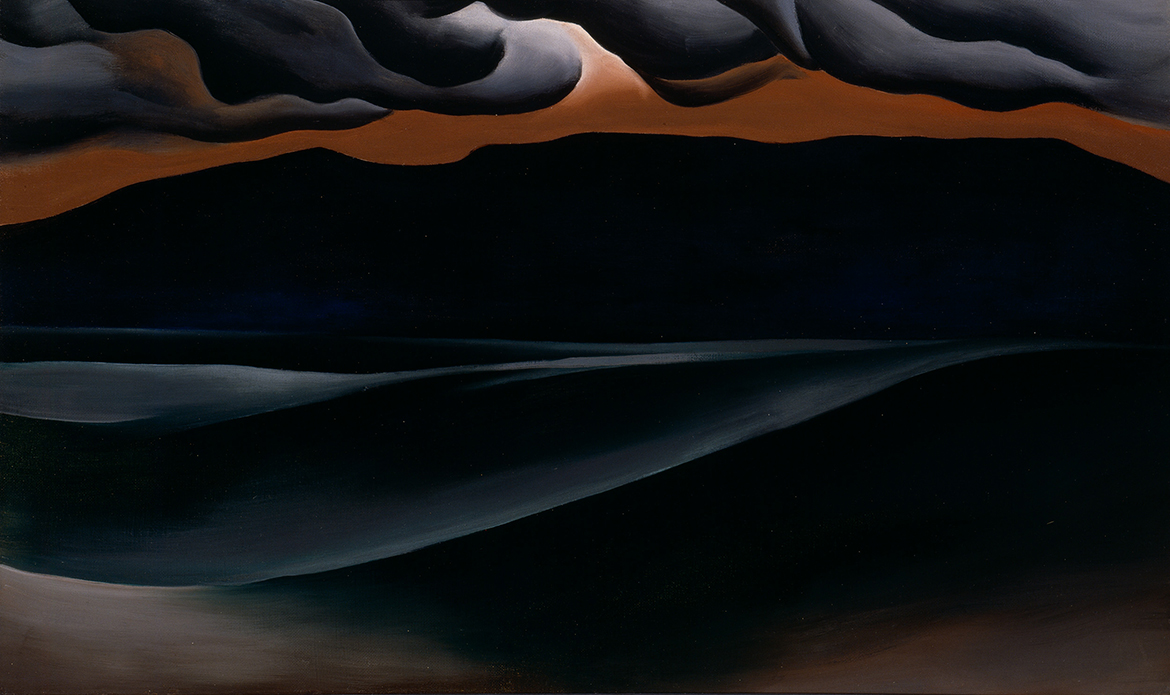
By the 1920s, O’Keeffe, Preston and Cossington Smith were living and working in cosmopolitan locations, but also explored the natural environments nearby, expressing these in strong colours and to the very edges of the canvas, each with a different approach. As well as the urban scenes encouraged by Stieglitz, O’Keeffe pursued the countryside and foliage of upstate New York’s Lake George, known for its summer storms, where she spent part of each year with Stieglitz (whom she married in 1924). There, she painted Storm Cloud, Lake George (Illustrated) in 1923.
Margaret Preston 1930
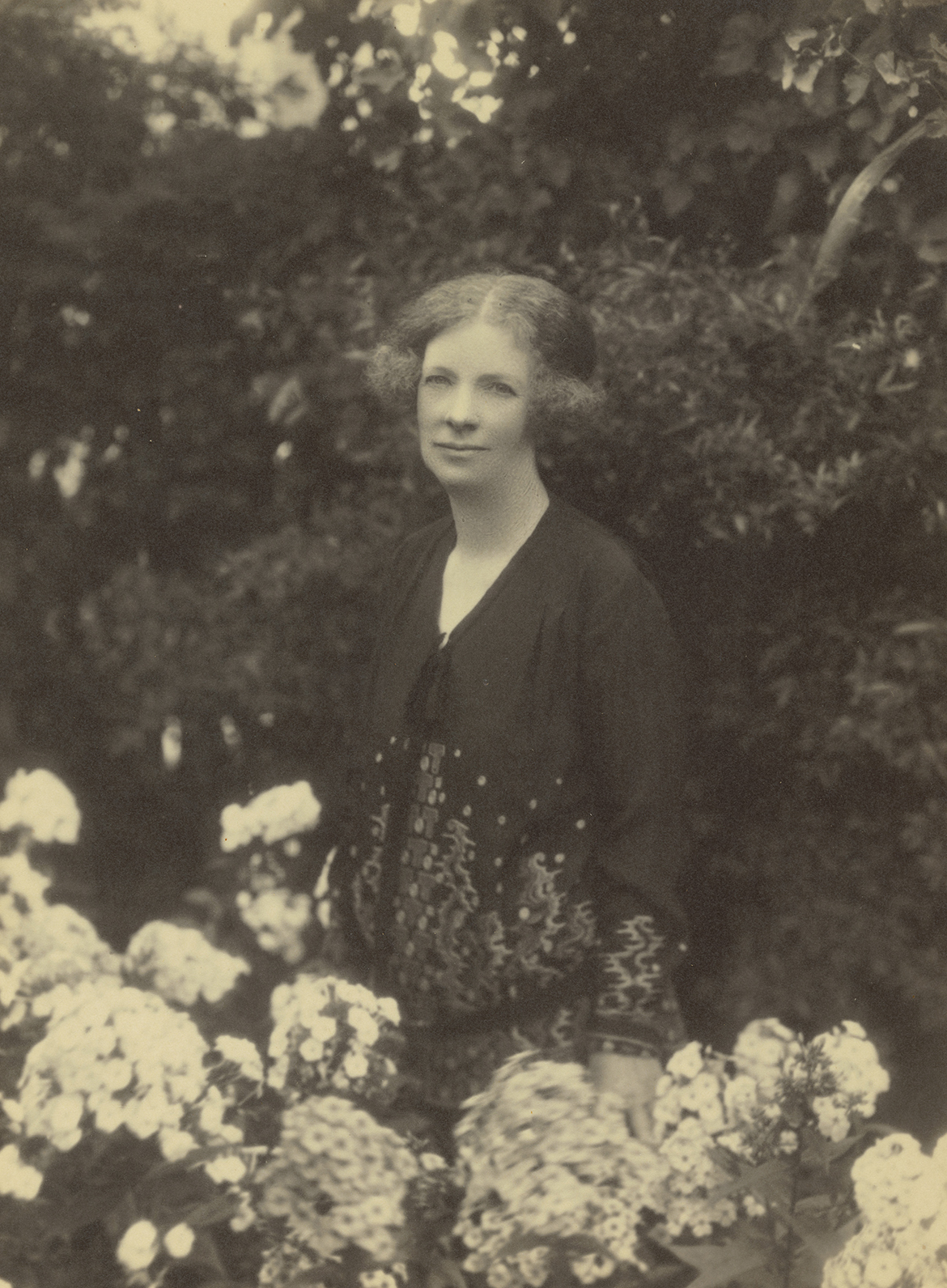
‘Australian Coral Flowers’ 1928
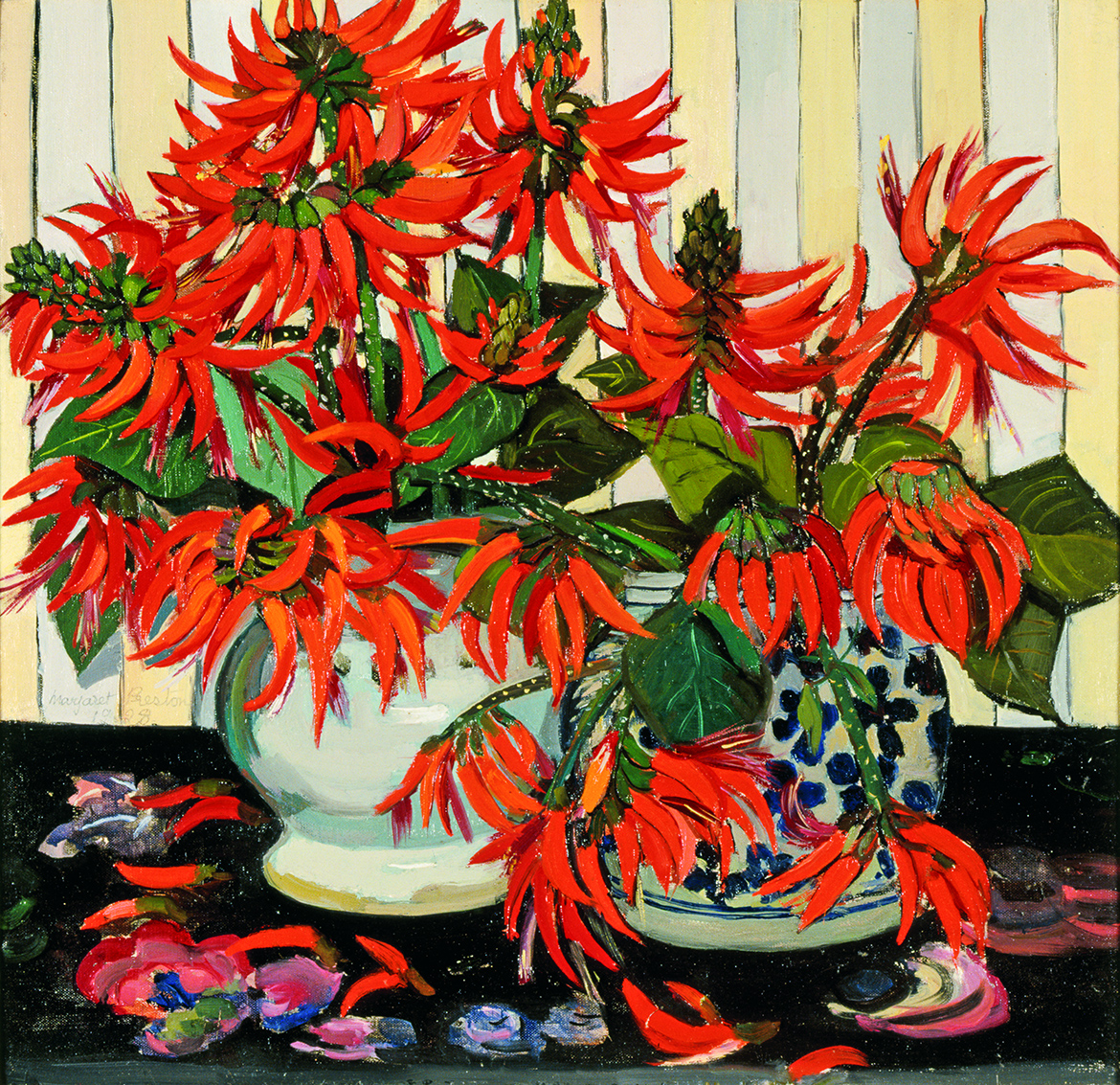
Art Gallery of New South Wales curator Denise Mimmocchi describes the composition as a ‘foreboding vitalist force’.1 O’Keeffe’s radically monochromatic palette reduces all identifying features of the landscape except the precise and recognisable horizon line of a distant mountain.
By contrast, Preston’s fiery red petals advance and vibrate against the green foliage in the shallow pictorial space of Australian Coral Flowers 1928 (Illustrated), defying national boundaries as a modern image in both colour and composition and activating a vibrant and radiant plane. As Heide Museum of Modern Art curator Lesley Harding writes, Preston’s still-life paintings were ‘a “laboratory table” upon which her converging interests in Western Modernism, Eastern art and colour theory might be tested’.2
Grace Cossington Smith c.1930–40
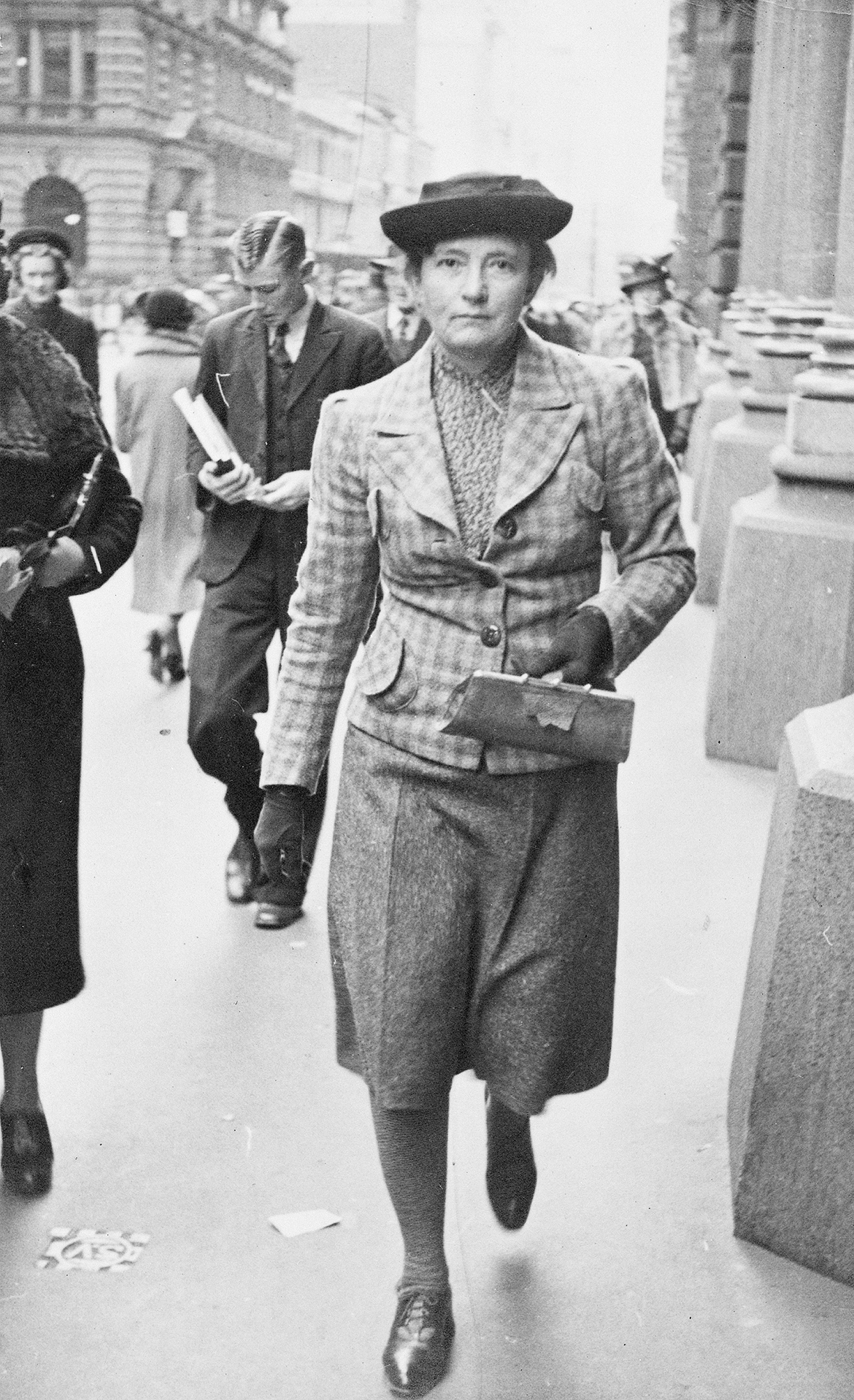
Grace Cossington Smith ‘Trees’ c.1927
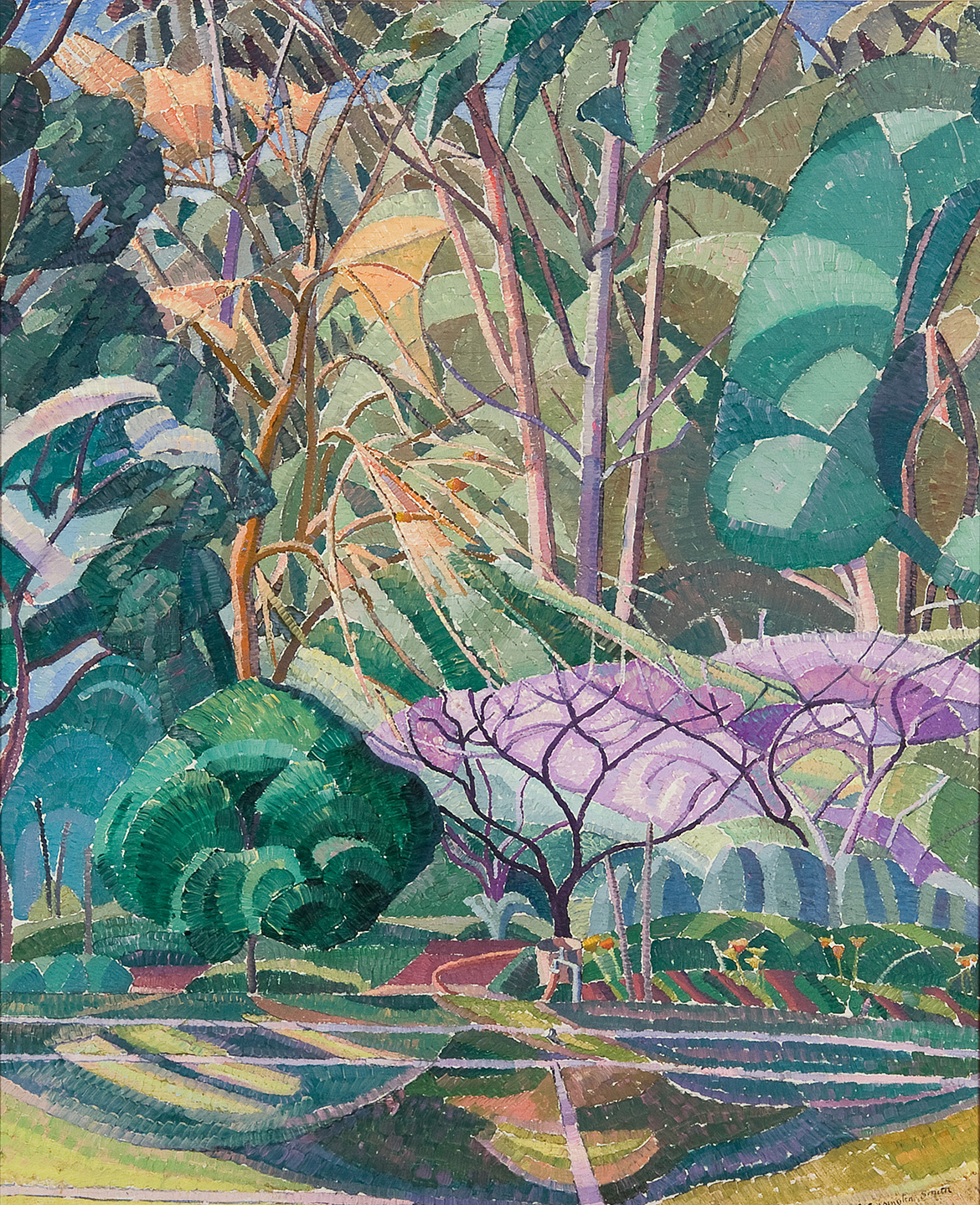
Different again is Cossington Smith’s Trees 1927 (Illustrated), with its field of intense, choppy brushstrokes of saturated colour, articulating the feeling of being among the flowering trees around her home and studio in Turramurra, just north of Sydney. The vitality of Cossington Smith’s touch adds to the drama of the dense brush conjured by this impenetrable composition. Each of these artists expressed local light and colour even without representing it, establishing individual strategies for evoking the specificity of place. Each moved toward abstraction by reducing details in a condensed space, hovering at the surface of her canvas.
To the questions of how to express local cultures, traditions and surroundings, O’Keeffe, Preston and Cossington Smith applied their European-based training and cosmopolitan appreciation for Modernism. They resolved the oppositional forces of abstraction and location by using similar compositional techniques, distilling and simplifying the shapes they observed into a shallow, flattened pictorial space that denied narrative, all while emphasising locally identifiable motifs, colours and subjects. They each contributed to revolutionising the viewer’s passive experience, pushing us into the active role of interpreting forms that emerged from the paint. Their discrete efforts brought them into the global discourse of twentieth-century Modernism.
Carolyn Kastner is Curator at the Georgia O’Keeffe Museum in Santa Fe, New Mexico, and one of the organising curators of ‘O’Keeffe, Preston, Cossington Smith: Making Modernism’.
Endnotes
1 Denise Mimmocchi, ‘Georgia O’Keeffe: Storm Cloud, Lake George 1923’, in Lesley Harding and Denise Mimmocchi (eds), O’Keeffe, Preston, Cossington Smith: Making Modernism [exhibition catalogue], Art Gallery of New South Wales, Sydney, and Heide Museum of Modern Art, Victoria, 2016, p.68.
2 Lesley Harding, ‘The modern art of painting flowers: Reinventing the still life’, O’Keeffe, Preston, Cossington Smith: Making Modernism, p.17, quoting Margaret Preston, Aphorism no.46, in ‘92 aphorisms by Margaret Preston and others’, in Sydney Ure Smith and Leon Gellert (eds), Margaret Preston: Recent Paintings, Art in Australia, Sydney, 1929, n.p.
‘Making Modernism’ / Queensland Art Gallery / 11 March to 11 June 2017 / The exhibition is presented by the Heide Museum of Modern Art, Victoria, the Art Gallery of New South Wales, Sydney, and the Queensland Art Gallery | Gallery of Modern Art, Brisbane, in partnership with the Georgia O’Keeffe Museum, Santa Fe, and supported by the Terra Foundation for American Art and the Gordon Darling Foundation.
#QAGOMA

